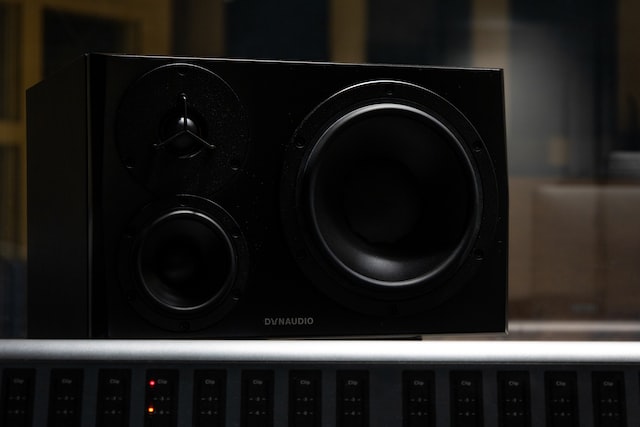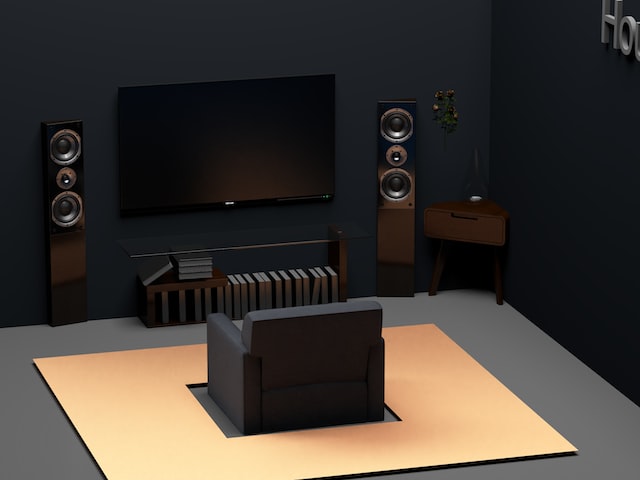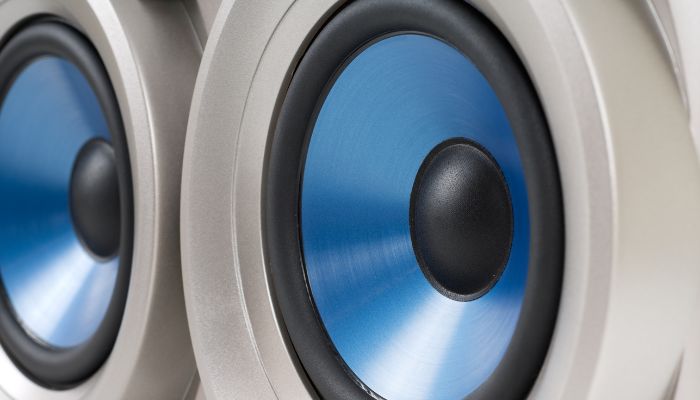AudioReputation is reader-supported. When you buy through links on our site, we may earn an affiliate commission Learn More

As you might already know, a subwoofer is an important component of many audio systems that must be carefully planned for the best results. While using a single sub is the most commonly adopted solution, a dual subwoofer layout has lots of benefits.
Using two subwoofers can eliminate a few common problems related to the component. This type of layout will give more power and clarity to the lower frequencies.
However, when building the optimal dual subwoofer setup, you will find that there are a lot of decisions to be made and factors to pay attention to. For example, where should you put each sub? What should the distance between them be? These points are of immense importance.
By the way, I’m Ian, a music specialist, and enthusiast with 10 years of experience! I will explain below the different types of placements for dual subwoofers and all their benefits.
Table of Contents
What is the Best Dual Subwoofer Placement?
The dual subwoofer positioning we recommend the most is the front wall placement, as it will give you a great balance between audio quality and convenience.
Our choice is based on the fact that placing your two subwoofers in front of your home theater, to the sides of your screen, and at the inner side of each front speaker is a very versatile solution for watching movies and listening to music.
With this positioning, the chances of having phase issues are minimal since the subs are very close to each other. Plus, the front wall placement won’t require as much space as other options and can be done in most small to medium rooms.
However, we do recommend that you try other placements, especially the corner placement where the subwoofers are positioned only slightly differently from the front wall variation, as testing each option out is the only surefire way to get the best bass response from your system.

How to Position Dual Subwoofers
There are a few ways in which you can position your dual subwoofers in your home theater. As we explained before, the best placement will depend largely on what you’re mainly using your audio system for, so we will go through the most popular ones in detail below.
Corner Placement
This is one of the most common positioning methods for dual subwoofers. As the name implies, each sub is placed in each corner of the room, at the outer side of the front speakers.
In that configuration, each subwoofer should be placed at a distance equivalent to the one between the left and right speakers. This is important so as not to create any phase issues. This is one of the best placement options if your AV receiver doesn’t feature a delay time adjustment.
The corner placement is a great choice whether you’re using your system primarily to listen to music or watch movies and TV shows. It is also a great fit if you have a larger room/screen.
Front Wall Placement
In this placement method, each subwoofer is placed just below the screen, at the inner side of each front speaker.
This is a pretty standard placement for those using a home theater primarily to listen to music but is also a great fit if you’re building your audio system in a smaller room with a smaller screen.
As the subwoofers are placed very close to each other in this position, it is unlikely they will cause any phase issues or need to use the delay time adjustment on your AV receiver.
Mid-Wall Placement
With a mid-wall placement, each subwoofer is positioned on the sides of the main watching/listening position, which in most cases, is the sofa.
In this configuration, the sound from each subwoofer takes less time to, and will reach your ears at the same time, which creates an illusion of increased volume and higher sound pressure in the low frequencies.
Is mid-wall placement a great idea? Well, it depends on the layout of your sound system. If your sofa is placed farther from the front speakers and closer to the back wall in your room, then there might be some benefit to using this placement.
Opposite Diagonal Placement
This type of placement is great for larger rooms. As the name implies, each subwoofer is placed at the opposite diagonal corner of the room.
An opposite diagonal placement creates a larger sweet spot for the low frequencies and a higher sound pressure that will disperse the sound waves more evenly across the room.
You must be careful while positioning your subwoofers like this, however, due to the potential for phase cancelation issues. You might have to use your AV receiver’s delay time adjustment feature.
This is one of the best types of placements if you have a larger home theater with multiple seats. However, it might be a tricky one to pull off in small and medium rooms due to size limitations.
Front and Back Placement
You can place one subwoofer in the front just below your screen and one in the back of the main seat/sofa, but not too close so as to not create a frequency build-up.
As is the case with the opposite diagonal placement, this positioning will disperse the sound waves more evenly and create a larger perceived sound image. It is a great fit for medium rooms with a small number of seats.
However, for this type of placement to be at its best, the main seat must be placed in the middle of the room, and that is not the case with most home theaters, where the seat is usually located closer to the back wall than to the center.
It is also very important to measure the distance between each sub precisely, as their soundwaves might encounter and create some resonance in this type of positioning.
Benefits of Dual Subwoofers

1. Better Overall Bass Response
As the subwoofer’s main job is to reproduce low frequencies only, adding an extra sub obviously means that you will get an overall better bass response from your system. How much of an improvement it will make depends heavily on the placement you choose.
If you want to maximize low frequencies, ie; having a louder bass response, then the mid-wall placement is a great idea. If you prefer a more natural response though, then a front wall placement might be a better option.
One easy way to improve the bass sound in your system even further is to try different EQ settings. We can’t give you the perfect EQ setting because the frequency response will vary greatly depending on your room, so it is best to test it for yourself.
2. Better Bass Response at Different Listening Positions
In a home theater setup with a single subwoofer, you usually have a sweet spot where the bass response and the sound of the low frequencies are optimal. The problem is, moving even slightly away from this spot can have a negative effect on your listening experience.
The reason for this is the fact that the subwoofer will have a different frequency response depending on where you stand in the room. For example, in some spots, the low frequencies might sound ok, while in others, it might sound too weak or too boomy.
A dual subwoofer setup is a great solution to this problem because having two subs will widen the sweet spot and disperse the sound waves further in a room.
This makes a dual subwoofer setup better for larger home theaters, where you have multiple seats, and everyone gets to have a great listening experience from every corner of the room.
Choosing the best positioning based on your particular setup will greatly improve this factor as well. For example, if you have a large home theater, then make sure to try the opposite diagonal placement since it is one of the best in those cases.
3. Increased Headroom
Having two subwoofers in a home theater setup greatly increases the headroom of your setup.
Headroom is related to the volume level of your system. The higher your headroom, the louder you can turn your setup without experiencing any distortion, hissing, or compression.
Another benefit of an increased headroom is that your system will have a more dynamic range to work with, which means that the sound won’t be as squashed as in a single-subwoofer setup and will appear more dynamic and powerful.
4. Better Imaging
In a home-theater system, imaging is everything. A system like that is designed to give you a heightened sense of space as if you were inside the movie you’re watching or in the studio with the artist whose song you’re listening to.
The problem with a single-subwoofer system and imaging is that you can tell from where the low frequencies are coming from in the room, something which might take away part of the immersion and enjoyment.
With a dual subwoofer setup, this problem gets greatly reduced, and you get a much more natural listening/watching experience, exactly because the bass will seem like it is coming from everywhere in your room.
5. Convenience and Greater Flexibility with Placement
Sometimes a dual subwoofer setup might be more convenient and fit your living space better because you can employ two smaller devices instead of a larger one.
Plus, they can be placed beside your TV rack or cabinet and can be more easily concealed.
The placement choices for a dual subwoofer setup as opposed to a single one are greater as well, allowing more possibilities to experiment with.
Check our article on the Subwoofers With High-Level Inputs by Audio Reputation
FAQs
It will depend on which placement you choose to use. For example, in the corner placement, each subwoofer should be placed adjacent to the left and right speakers, and how far apart they will be will depend on factors like room size.
With that being said, we recommend that you maintain a distance of at least 5ft between each subwoofer so as to not create a build-up of low frequencies in your system and avoid a boomy/resonant sound.
Whatever placement you choose, it is important to also calculate for delay times to avoid any phase issues.
Yes, the phase of dual subs must be the same. You should check the phase switch before installing your device. Failing to do so will create a phase cancelation issue that will take all the energy away from your bass sound.
Apart from making sure that both subs are in the same phase, you should also test them to see if they are, in fact, at the right phase and synced with your AV receiver. Use the delay time feature if needed.
Both subwoofers must be connected to your AV receiver. This is the easiest part. The trickiest part is aligning them to achieve the best low-frequency response possible without getting any phase cancelation issues.
To do this, you have to measure your room and account for delay times because the sound of one subwoofer will inevitably reach your ears before the sound of the other does.
To solve this problem, many AV receivers have a feature called delay time adjustment, where you can delay the sound signal by a few milliseconds. This technology makes a huge difference in the overall sound quality.
Conclusion
Setting up a dual subwoofer system shouldn’t be a hard task as long as you carefully plan your devices’ placement.
In fact, the dual subwoofer placement can make or break a home theater system, especially since everyone loves a solid bass response, and is one of the most important components of any sound system.
While the front wall placement is recommended for most audio systems due to its great balance between audio quality and convenience, it is best to test different placements for yourself and pay attention to the differences that every small detail makes.
Another factor we’d like to remind you to be mindful of is the relationship between the size of your room and the distance between each subwoofer, which must be calculated to avoid any phase cancelation issues.
We hope this guide was helpful. Make sure to check our related articles about home theaters and subwoofers, and feel free to contact us if you have any questions about the subject!

Hello, I’m Ian.
I’m a music producer, musician, and writer for the AudioReputation website. I’ve been involved with making music and the processes revolving around audio technology for longer than I can recall, so I find it amusing to share my knowledge with fellow enthusiasts worldwide when I’m not working with artists or creating new songs.
Along my path as a music maker, I discovered the ability to write informative content, and I decided to embrace it. I’ve written for a few websites about audio and music, including a digital magazine.
I’m particularly passionate about any sort of audio gear: guitar pedals, amplifiers, headphones, and even home speakers. That makes it really joyful for me to review any product related to the subject and give my honest opinion about them. I also frequently write tips and guides for consumer and professional-grade audio.
